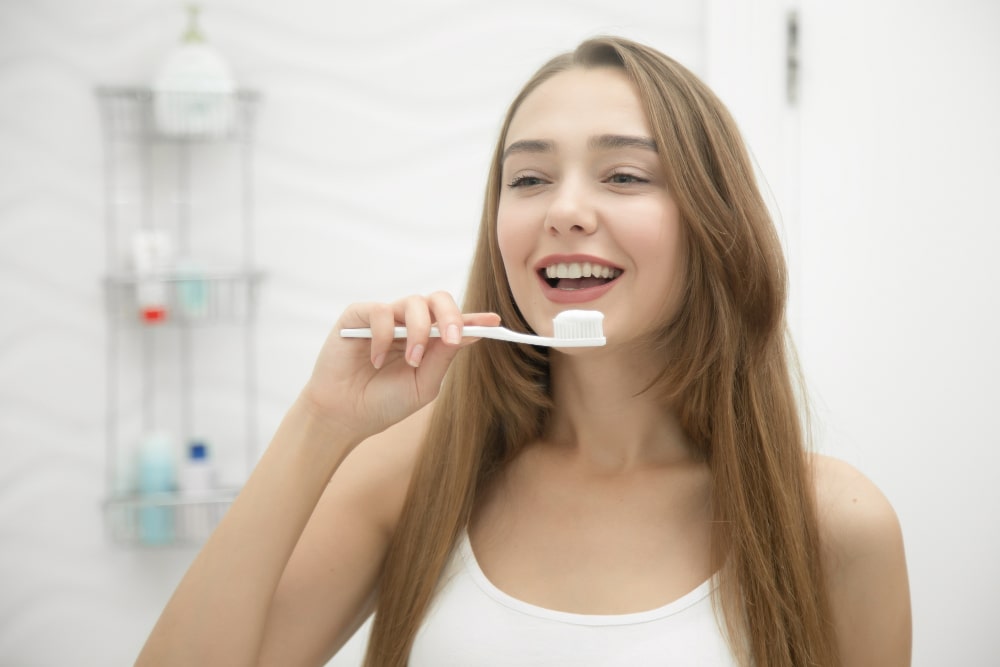Brushing your teeth seems like a simple task, but many people unknowingly make mistakes that can compromise their oral health. Proper brushing technique is crucial for removing plaque, preventing cavities, and maintaining healthy gums. In this article, we’ll explore some of the most common mistakes people make when brushing their teeth and how to avoid them.
- Brushing Too Hard: One of the most common mistakes people make is brushing too vigorously. Aggressive brushing can damage the enamel, irritate the gums, and even cause gum recession over time. Instead, use gentle, circular motions with a soft-bristled toothbrush to effectively clean your teeth without harming your gums or enamel.
- Not Brushing for Long Enough: Many people don’t brush their teeth for the recommended two minutes. Insufficient brushing time can leave behind plaque and bacteria, increasing the risk of tooth decay and gum disease. Set a timer or use a toothbrush with a built-in timer to ensure you’re brushing for the full two minutes each time.
- Neglecting the Gumline: Some individuals focus solely on brushing the surfaces of their teeth and neglect the gumline. Plaque and bacteria can accumulate along the gumline, leading to gum disease if not removed. Be sure to angle your toothbrush towards the gumline and gently brush in a circular motion to clean this area thoroughly.
- Using an Incorrect Brushing Technique: Improper brushing technique can diminish the effectiveness of your oral hygiene routine. Avoid brushing back and forth in a sawing motion, as this can cause enamel wear and gum damage. Instead, use gentle, circular motions to clean each tooth and the surrounding gum tissue.
- Brushing Immediately After Eating: While it may seem counterintuitive, brushing immediately after consuming acidic foods or beverages can actually damage the enamel. Acid softens the enamel, and brushing too soon can wear it away. Instead, wait at least 30 minutes after eating before brushing to allow your saliva to neutralize acids and remineralize your teeth.
- Using an Old or Worn-Out Toothbrush: A toothbrush with frayed or worn-out bristles is less effective at removing plaque and debris from your teeth. Replace your toothbrush or toothbrush head every three to four months, or sooner if the bristles become worn. A fresh toothbrush ensures optimal cleaning power and helps protect your oral health.
- Skipping Flossing: Brushing alone cannot reach all areas between the teeth and along the gumline. Skipping flossing means leaving behind plaque and bacteria that can lead to cavities and gum disease. Make flossing a daily habit to remove plaque from areas your toothbrush can’t reach and maintain healthy gums.
- Brushing Too Soon After Acidic Drinks: As mentioned earlier, brushing immediately after consuming acidic beverages like citrus juices or soda can erode tooth enamel. It’s best to rinse your mouth with water or chew sugar-free gum to stimulate saliva production and neutralize acids before brushing.
- Ignoring Your Tongue: The tongue harbors bacteria and can contribute to bad breath if not properly cleaned. Use your toothbrush or a tongue scraper to gently clean the surface of your tongue each time you brush your teeth. This helps remove bacteria and food particles, keeping your breath fresh.
- Rushing Through Your Brushing Routine: Some people rush through their brushing routine, sacrificing thoroughness for convenience. Take your time and brush each tooth surface, the gumline, and your tongue systematically. A thorough brushing routine is essential for removing plaque and maintaining optimal oral health.
